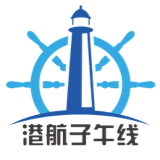47 Vessels Return to Suez Canal: Suez Port – An International Shipping Hub Balancing Strengths and Challenges 47艘船重回苏伊士运河,苏伊士港——优势与困境并存的国际航运枢纽
Ⅰ Overview of the Importance of Suez Port
Suez Port, as an important Egyptian port, holds a key position in the global shipping industry. Recently, on February 23, during the opening ceremony of the 14th International Conference on Maritime Transport and Logistics, the Chairman of the Suez Canal Authority, Osama Rabie, revealed that since early February, 47 ships have abandoned the Cape of Good Hope route and opted to transit through the Suez Canal. This shift is attributed to the implementation of the Gaza ceasefire agreement, which led to the cessation of attacks on ships by Yemen's Houthi forces and stabilized the situation in the Red Sea region. This not only highlights the significance of the Suez Canal route but also indirectly reflects the crucial role of Suez Port in the shipping lanes. Moreover, Suez Port serves as an important transit point for Muslims traveling to Mecca for pilgrimage, making it significant in terms of religious and cultural exchange.

图源网络
Image Credit:Internet
一、苏伊士港的重要地位概述
苏伊士港作为埃及重要港口,在全球航运领域占据关键位置。近期,埃及苏伊士运河管理局主席乌萨马・拉比耶于 2 月 23 日在第 14 届国际海上运输和物流年会开幕式上透露,自 2 月初以来,已有 47 艘船只放弃绕行好望角,转而选择通过苏伊士运河。这一转变得益于加沙停火协议实施后,也门胡塞武装停止袭击船只,红海地区局势趋于稳定。这不仅体现出苏伊士运河航线的重要性,也侧面反映出苏伊士港在航线中的关键地位。而且,苏伊士港还是穆斯林前往麦加朝圣的重要中转站,其在宗教文化交流方面同样具有重要意义。
1. Geographical Location and Strategic Characteristics of Suez Port
(1) Geographical Location and Regional Connectivity
Suez Port is located in northeastern Egypt, at the southern entrance of the Suez Canal, on the vital strait connecting the Red Sea and the Mediterranean Sea. It serves as a global shipping hub linking Europe, Asia, and Africa. The surrounding countries are mainly Egypt, with close connections to Israel (via the Straits of Tiran), Saudi Arabia (across the Red Sea), and Jordan (near the Gulf of Aqaba). It is a core node in the trade network of the Middle East, North Africa, and Southern Europe.
In Egypt, Suez Port is an important center for oil refining and chemical industries, connected to various domestic locations such as Cairo and Port Said by rail and road. The refined oil produced by its refineries can be transported directly to Cairo and Alexandria via pipelines, playing a key role in Egypt's domestic economic cycle.
On the international level, it is a critical node in the international maritime shipping routes connecting the Mediterranean Sea and the Red Sea, linking Europe, Asia, and Africa. The crude oil exports from Gulf countries such as Saudi Arabia and the UAE rely on the Red Sea route, and Suez Port is a necessary passage for their entry into the European market. Additionally, it complements ports such as Eilat in Israel and Aqaba in Jordan, handling transshipment functions for general cargo, roll-on/roll-off ships, and LNG transportation within the region, playing an irreplaceable role in international trade transportation.
二、苏伊士港的地理位置与战略特性
(一)地理位置与区域关联
苏伊士港位于埃及东北部,坐落在苏伊士运河南端入口,处于红海与地中海之间的咽喉要道,是连接欧亚非三大洲的全球航运枢纽。周边接壤国家主要是埃及,同时与以色列(通过蒂朗海峡)、沙特阿拉伯(隔红海相望)、约旦(亚喀巴湾附近)等周边国家联系紧密,是中东、北非和南欧贸易网络的核心节点。
从埃及国内来看,苏伊士港是重要的石油加工和化学工业中心,通过铁路和公路与开罗、塞得港等国内各地相连,其炼油厂生产的成品油借助输油管道可直达开罗及亚历山大,在埃及国内经济循环中扮演着关键角色。
在国际层面,它是连接地中海与红海,贯通欧、亚、非三大洲国际海运航道的关键节点。沙特阿拉伯、阿联酋等海湾国家的原油出口依赖红海航线,苏伊士港是其进入欧洲市场的必经之路。此外,它还与以色列埃拉特港和约旦亚喀巴港形成互补,承担区域内散杂货、滚装船和 LNG 运输的中转职能,在国际贸易运输中发挥着不可替代的作用。
(2) Basic Port Characteristics
Port Business: Suez Port focuses on bulk cargo (such as oil, fertilizers, and ores) and project cargo (such as wind power equipment). Relying on the industrial support of the Suez Canal Economic Zone, it provides customized loading/unloading and warehousing services for various types of cargo. Since the opening of the Suez Canal in 1869, its transshipment business has been busy. The main exports include oil, manganese sand, and cotton, while imports consist of wheat, machinery, and textiles.
Service Features: Suez Port has a relatively comprehensive maritime service system. In terms of ship repair and supply, it has dry docks and floating docks that can provide emergency repairs and fuel replenishment for transiting vessels. For pilotage and tugboat services, due to the complex channels and canal navigation rules, there is a rigid demand for mandatory pilotage and tugboat services. The port is equipped with professional pilots and a strong tugboat fleet to ensure the safe entry and exit of ships. Additionally, within the framework of Egyptian law, it can handle maritime disputes in the Red Sea region and provide maritime insurance and arbitration services. Moreover, there are several professional ship agencies in the port that offer comprehensive agency services for ships, including handling port entry/exit procedures and arranging loading/unloading operations.
(二)基本港特性
- 港口特性:苏伊士港以大宗散货(如石油、化肥、矿石)和项目货(如风电设备)为核心业务。依托苏伊士运河经济区的工业配套,它能为各类货物提供定制化装卸和仓储服务。自 1869 年苏伊士运河开通后,其转口业务繁忙,主要出口货物包括石油、锰砂、棉花等,进口货物有小麦、机械、纺织品等。
- 服务特性:苏伊士港拥有较为完善的海事服务体系。在船舶维修与补给方面,设有干船坞和浮船坞设施,能为过境船舶提供紧急维修和燃油补给。引航与拖轮服务方面,由于航道复杂和运河通行规则要求,强制引航和拖轮服务需求刚性。同时,港口配备专业引航员和强大的拖轮队伍,保障船舶进出港安全。此外,依托埃及法律框架,这里还能处理红海区域航运事故纠纷,提供海事保险与仲裁服务。而且,港口还有多家专业船舶代理公司,为船舶提供办理进出港手续、安排装卸作业等全方位代理服务。
3. Constraints on Suez Port Development Due to Natural Conditions
(1) Key Data and Sustainability Challenges
Draft Limitations: The maximum draft depth of the main channel of Suez Port is 16.5 meters, which cannot meet the full-load transit requirements of Ultra Large Crude Carriers (ULCCs, with drafts exceeding 20 meters) and the latest generation of container ships (24,000 TEU class). This necessitates transshipment at Port Said or Mediterranean ports for some cargoes, weakening its competitiveness as a hub port and severely restricting its expansion in large-vessel business, thereby affecting its status in global shipping.
Tidal Range and Operational Windows: The tidal range in the Red Sea is only 0.6 - 1.2 meters, theoretically facilitating round-the-clock operations. However, seasonal southeast winds (Khamsin) and sandstorms (March - May) cause an average of 15 - 20 days of operational interruptions per year, leading to supply chain fluctuations. Additionally, the maximum tidal range is 1.9 meters, while the minimum is only 0.15 meters. Variations in tidal ranges affect ship berthing and unberthing operations, increasing the difficulty and risk of ship handling and reducing port operational efficiency.
Rainy Season and Visibility: Although Suez Port receives less than 50 millimeters of annual rainfall, sudden short-term heavy rainfall during the winter months (November - February) can cause electrical faults in port equipment. Combined with Red Sea fog (an average of 30 days of low visibility per year), this further reduces effective operating time. Moreover, Suez Port has a tropical desert climate with an average annual rainfall of about 900 millimeters. During the rainy season, rainfall can impact port loading/unloading operations and cargo storage, such as causing cargo dampness and loading equipment malfunctions, affecting port operational efficiency and sustainable development.
Sustainability Bottlenecks: The cost of existing channel dredging is exorbitant (each dredging operation costs over US$100 million), and the Red Sea's ecological sensitive areas restrict land reclamation, limiting the port's expansion potential and making it difficult to meet the growing shipping demand, thus forming a bottleneck for its future development.
三、自然条件对苏伊士港发展的制约
(一)关键数据与可持续性挑战
- 吃水限制:苏伊士港主航道最大吃水深度为5 米,无法满足超大型油轮(ULCC,吃水超 20 米)和最新一代集装箱船(24,000 TEU 级)的满载通行需求。这使得部分货物需在塞得港或地中海港口中转,削弱了其作为枢纽港的竞争力,严重制约了港口在大型船舶业务方面的拓展,影响了其在全球航运中的地位。
- 潮差与作业窗口:红海潮差仅6 - 1.2 米,理论上利于全天候作业,但受季节性东南风(Khamsin)和沙尘暴(3 - 5 月)影响,年均约 15 - 20 天的作业中断导致供应链波动。此外,潮汐最大潮差为 1.9 米,最小潮差仅 0.15 米,潮差的变化会影响船舶靠泊和离泊操作,增加了船舶操作难度和风险,降低了港口运营效率。
- 雨季与能见度:尽管苏伊士港年降水量不足 50 毫米,但冬季(11 - 2 月)突发性短时强降雨可能导致港口设备电路故障。叠加红海雾霾(年均 30 天低能见度),进一步压缩了有效运营时间。同时,苏伊士港属热带沙漠气候,虽然全年平均降雨量约 900mm,但在雨季时,降雨可能会对港口装卸作业和货物存储造成影响,如导致货物受潮、装卸设备故障等,影响港口运营效率和可持续发展。
- 可持续性瓶颈:现有航道疏浚成本高昂(单次疏浚费用超 1 亿美元),且红海生态敏感区限制填海造陆,使得港口扩建潜力受限,难以满足不断增长的航运需求,对其未来发展形成了瓶颈制约。
Ⅳ Impact of Management Corruption on Suez Port's Service Efficiency
(1) Manifestations of Systemic Corruption
Administrative Rent-Seeking: A "speed money" culture exists within the customs and port authorities, where cargo clearance times can fluctuate by 3 - 7 days based on the amount of bribes, resulting in a 10 - 15% increase in logistics costs. This behavior severely undermines the fair competition environment, increases corporate operating costs, and reduces the port's attractiveness.
Terminal Operation Corruption: In terms of loading/unloading priority manipulation, paying cargo owners can jump the queue, disrupting normal operation plans. Additionally, port cranes and other equipment are sometimes privately subleased to third parties, with official rental rates disconnected from market prices, causing unreasonable resource allocation and affecting the port's overall operational efficiency.
Public Terminal Kickbacks: Local forces extract terminal management fees through "protection money" (about 2-3% of cargo value), forcing some cargo owners to switch to private terminals (such as Sokhna Port). This exacerbates resource fragmentation and negatively impacts Suez Port's business volume and market share.
Loss of Management Efficiency: According to World Bank data, Suez Port's cargo detention time is 40% higher than the regional average (e.g., Jordan's Port of Aqaba). Corruption directly causes its Logistics Performance Index (LPI) ranking to remain outside the top 90, severely damaging the port's international image and competitiveness.
四、管理腐败对苏伊士港服务效率的影响
(一)系统性腐败的表现
- 行政寻租:海关和港务局存在 “加速费” 文化,货物清关时间因贿赂金额差异可达 3 - 7 天波动,导致物流成本增加 10 - 15%。这种行为严重破坏了公平竞争的市场环境,增加了企业运营成本,降低了港口的吸引力。
- 码头操作层腐败:在装卸优先级操控方面,付费货主可插队作业,扰乱正常作业计划;港口起重机等设备还存在被私下转租给第三方的情况,官方租赁费率与实际市场价脱节,造成资源分配不合理,影响港口整体运营效率。
- 公共码头抽成:地方势力通过 “保护费” 形式抽取码头管理费(约 2 - 3% 的货值),迫使部分货主转向私营码头(如 Sokhna 港),加剧了资源碎片化,对苏伊士港的业务量和市场份额造成了负面影响。
- 管理效率损失:世界银行数据显示,苏伊士港货物滞留时间比区域平均水平(如约旦亚喀巴港)多出 40%,腐败问题直接导致其全球物流绩效指数(LPI)排名长期徘徊在 90 名以外,严重损害了港口的国际形象和竞争力。
Ⅴ Impact of Regional Social Relations and Security Risks on Suez Port
(1) Overlapping Effects of Geopolitical Conflicts and Internal Turmoil
Cross-Border Armed Threats: Frequent activities of extremist organizations in the Sinai Peninsula have led to attacks on the Suez Canal shoreline, causing insurance companies to increase war risk premiums for the Red Sea route. Missile threats from Yemen's Houthi forces targeting the southern Red Sea shipping lanes (such as attacks on Saudi oil tankers) indirectly affect the shipping safety assessment of Suez Port, increasing vessel navigation risks and influencing shipping companies' choices regarding the port.
Labor and Social Conflicts: The port's workforce largely comes from poor Egyptian provinces, and disputes over wages between unions and employers frequently lead to strikes. For example, a strike in 2021 paralyzed the port for 12 hours, severely affecting its normal operations. Protests from local communities over land expropriation for port expansion, such as the 2023 resistance by Suez city residents against industrial zone land acquisition, have delayed infrastructure upgrades.
Externalization of Security Costs: Cargo owners are forced to pay an additional 5-8% for security costs (armed escort, cargo tracking systems). This not only increases the costs for cargo owners but also weakens the port's fee competitiveness, adversely affecting port business development.
五、区域社会关系与安全风险对苏伊士港的影响
(一)地缘冲突与内部动荡的叠加效应
- 跨境武装威胁:西奈半岛极端组织活动频繁,2022 年针对苏伊士运河沿岸的袭击事件导致保险公司上调红海航线战争险费率。也门胡塞武装对红海南部航道的导弹威胁(如针对沙特油轮的袭击)也间接波及苏伊士港的航运安全评估,增加了船舶航行风险,影响了航运公司对该港口的选择。
- 劳工与社会矛盾:港口雇工多来自埃及贫困省份,工会与资方因薪资纠纷屡发罢工,如 2021 年罢工导致港口瘫痪 12 小时,严重影响港口正常运营。周边社区对港口扩建的土地征收抗议,如 2023 年苏伊士城居民抵制工业区征地,拖延了基础设施升级进程。
- 安全成本外部化:货主被迫额外支付 5 - 8% 的安保费用(武装护航、货物追踪系统),这不仅增加了货主成本,也削弱了港口费率竞争力,对港口业务发展造成不利影响。
Ⅵ Conclusion: Development Dilemma and Outlook Under Multidimensional Constraints
Suez Port's development potential is constrained by the rigidity of natural conditions (draft and climate), the path dependency of management corruption, and the negative externalities of regional security. Under the current circumstances, if it fails to break the development deadlock through international cooperation (such as adopting the EU port management model) and domestic governance reforms (digital customs clearance, transparent bidding), its position as a regional maritime service center may gradually be replaced by emerging hubs such as Djibouti Port and Jeddah Port in Saudi Arabia. However, with its superior geographical location and solid development foundation, Suez Port still has great potential for development if it can effectively address existing problems and is expected to continue playing an important role in the international shipping industry in the future.
E-PORTS provides comprehensive services for Suez Port, with key business areas including captain procurement, crew changes, protective agency services, spare parts, and emergency services. Since early February, the Suez Canal route is expected to gradually resume, but shipping companies need to remain flexible to adapt to market changes. Due to the relatively tense situation in the Red Sea in recent years, the transit cost of the Egyptian Suez Port, as one of the main ports on the Red Sea route, has increased. It is reported that starting from April, Suez operations will also adjust the surcharges for cruise ship transits. For more detailed information on port policies and fee forecasts, please contact us:
- WhatsApp/WeChat: 13816101982
- Email: contact@e-ports.com
六、结论:多维约束下的发展困局与展望
苏伊士港的发展潜力受到自然条件刚性(吃水与气候)、管理腐败的路径依赖以及区域安全负外部性的三重限制。在当前形势下,若无法通过国际合作(如引入欧盟港口管理模式)和本土治理改革(数字化清关、透明化招标)打破发展僵局,其作为区域海事服务中心的地位可能逐渐被吉布提港、沙特吉达港等新兴枢纽取代。但苏伊士港凭借其优越的地理位置和深厚的发展基础,若能有效解决现存问题,仍具有巨大的发展潜力,有望在未来国际航运领域继续发挥重要作用。
E-PORTS为苏伊士港提供全面服务,重点业务包括船长采购、换员、保护代理、备件、应急服务等。自2月初以来,苏伊士运河航线有望逐步恢复,但航运公司需保持灵活性,应对市场变化,由于近年来红海局势较为紧张,因此埃及苏伊士港口作为红海航线主要港口之一,其通行成本有所上调,据悉4月起,苏伊士运营对邮轮通行附件费也将会有所调整,如需了解更多详细相关港口政策及费用预测,可联系我们:
- WhatsApp/WeChat:13816101982
- Email:contact@e - ports.com








